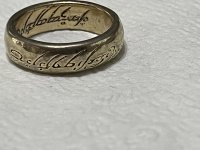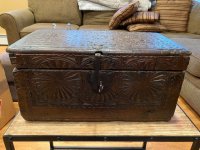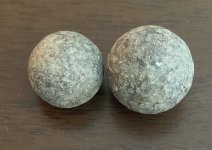Bruno E.J.S. Werz, 'Een Bedroefd, en Beclaaglijck Ongeval': De Wrakken van de VOC-Schepen Oosterland en Waddinxveen (1697) in de Tafelbaai. Zutphen: Walburg Pers, 2004. 224 pp. ISBN: 90-5730-285-3.
On Monday May 20, 1697, the Table Bay offered a majestic maritime spectacle. Five East Indiamen from Ceylon had been riding the local roadstead since May 6, accompanied by two smaller Company ships who had arrived one week earlier from Batavia along with four ships from the Dutch Republic making the usual halfway call at the Cape. That very day the homeward-bound fleet of 12 ships arrived from Batavia, increasing the total number of ships present to an impressive 23. The nineteen ships from Batavia and Ceylon carried a return cargo with an invoice value of no less than 5.5 million guilders. Potential profits indeed were enormous, but so were the costs and risks involved as the events of May 24, 1697, would demonstrate all too clearly.
Wednesday May 22 the weather broke. A strong wind was rising, reaching gale force the next day as the rain came pouring down. ?The sea turned furious, the waves were surging higher and higher until they were breaking over mast and topmasts? (60). The tens of passengers, sick seamen, and higher Company servants sojourning on land had no reasons to get upset. For the remaining crews of less than three thousand, however, the situation became ominous. At eight o?clock in the evening emergency signals could be heard: the ?Stad Keulen? was drifting rudderless towards the ?Kattendijk?. No other option seemed available but to cut the anchor mooring ropes. A collision was prevented, yet the result was a second ship being rudderless. In the early morning of May 24 another anchor of the ?Kattendijk? became entangled in a mooring cable of a third ship, the ?Oosterland?, leading to a heavy collision knocking off a large portion of the stern of the ?Oosterland?. To prevent a second collision the crew could only cut the cables of their ship. Now three vessels were adrift until the respective crews managed to put out other anchors. For the moment the situtation was under control and a serious financial loss seemed to have been averted. This hope proved to be vain. About nine o?clock the cable of the bower of the fourth ship, the ?Waddinxveen?, snapped. New anchors failed to hold the ship for the more than fist-size ropes snapped. The same happened to the ?Oosterland? a few hours later. Both ships were driven relentlessly to the coast and ran aground. In next to no time the ships broke up in pieces in the raging surf, ?without anyone being able to provide the least assistance and remedies for the salvation or rescue of these stranded keels due to the stormy weather and the rough seas? (61). Leaving aside the residual value of the two hulls, the V.O.C. Chamber of Enkhuizen suffered the loss of fl. 229,601 in commodities loaded in Batavia, while the Amsterdam Chamber lost fl. 372,692 in Ceylon cargo. The 750-ton-?Waddinxveen?, built in Rotterdam in 1691, had only completed one entire round-trip. The ?Oosterland?, built in Middelburg in 1685, hadd already made three voyages back-and-forth before finally departing from Ceylon for its fourth home passage. What value these ships represented on the eve of the disaster is difficult to estimate since the Company did not use a system of annual depreciation.
In addition, there was the cost in human life, about 140 overall. Tens of the surviving crews were burying the lifeless, sometimes seriously injured and decomposing bodies in the beach sand. Whatever salary the victims were owed until the day of disaster was paid out to the heirs by the Company. Other than usual, the V.O.C. Directors or Gentlemen Seventeen decided on December 12, 1697, not to reduce the exisitng debts by one-sixth?illustrative of the frugal personnel policy of the Company. In shrill contrast, no expenses were spared to salvage the usable equipment of the wrecks, including thirteen canons and thirty-some anchors lost by the stranded and other vessels, and to make the cargo washed ashore fit for shipment to patria. The overall losses, however, dwarfed the value of the commodities salvaged. Ten percent of the return cargo from the Batavia and Ceylon fleets had been lost and things would even get worse. The ship ?Bantam? from Amsterdam run into trouble in the final stages of the homeward voyage and shipwrecked December 3, 1697, off the coast of Vlissingen (Flushing), including a cargo of 383,564 guilders. Total losses in cargo thus amounted to about 1 million guilders, a enormous sum in lost sales.
?Een Bedroefd, en Beclaaglijck Ongeval? (?A Sad and Lamentable Accident?) displays a hybrid character. In the opening chapter Werz discusse the history of the V.O.C., giving ample attention in the lattter part to the ships, the people on board, the intercontinental voyages, and the Cape of Good Hope settlement. Chapter two provides an extensive description of the history of the two ships from the time of constructiopn to the disastrous events of May 24, 1697, and its aftermath. Such an approach has previously been employed successfully by Ruud Paesie in Het VOC-Retourschip Ravesteyn: De Laatste Reis van een Zeeuwse Oostindi?vaarder (1999). The two historical chapters are followed by two chapters centered around maritime archeoology. One? chapter three? describes the founding of the Maritime Archeological Project (MAP) Table Bay, the outcome of coincidence combined with a strong sense of public responsibility. The author recounts how, following his apppointment as Lecturer in Maritime Archaeology at Cape Town University, he gave public lectures in order to reach a larger audience. One of these was attended by some amateur divers, visiting Werz in January 1989 to inform him of the discovery of several unidentifiable objects. In this case honesty paid off: the divers were intimately involved in the subsequent field research at the wreck sites of the ?Oosterland? and ?Waddinxveen?, which concludes the third chapter. The last chapter covers the physical geographical development of Table Bay, the classification of the finds, the internal organisation of a V.O.C. East Indiaman, and the material culture of the two ships. The final sections of the chapter deal extensively with the Geographical Information System (GIS).
Paesie is neither an archaeologist nor is he employed by an institution whose societal usefulness needs justification. For Werz things are clearly different. He explicitly champions the cause of the young discipline of maritime archaeology in South Africa and sounds its accomplishments. Remarkable in this regard is a paragraphy in chapter four, not mentioned previously, dealing with the discovery of prehistoric celts near the wreckage site of the two V.O.C. ships. These stone tools have been dated to the Acheulian or Lower Paleolithic Age and have been forged between 300,000 and 1.4 million years ago when the Table Bay as still part of the continent. The author does not hide his enthusiasm, something which cannit escape the prospective buyer in the bookstore reading the back flap: ?The project has produced results of global significance, including the discovery on the ocean-floor of the oldest objects ever found under water?. The find is remarkable indeed. At the same time, however, one suspects the author to exploit this fact in order to justify research in which, how could it be otherwise, Dutch East Indiamen play a key role. It needs to be said her that ?Eurocentric? historical research in South Africa for obvious reasons is controversial and not a self-evident choice to all scholars.
Werz notes in his introduction that though research has not been concluded yet, he nonetheless felt compelled to draw up an interim balance in order to provide guidelines to future research. The author seems to aim here at colleagues, perhaps also policy-makers in the area of the maritime heritage. If so, he clearly renders his group of colleagues an imperfect service. The first chapter is simply too long and offers too little that is new. The second chapter dealing with the ship ?biographies? provides a reasonable overview of intercontinental and intra-Asiatic shipping, though this has been done before and more extensively by Hans Bonke in De Zeven Reizen van de Jonge Lieve: Biografie van een VOC-schip, 1760-1781 (1999). If, on the other hand, the book is aimed at the general audience, several sections of the concluding chapters might be too technical, in particular those on data processing, the physical geography of the wreck site, and the GIS system. Nevertheless the interested reader eager to be witness of a ?work under construction? is nicely informed about the procedures involved in underwater research and the processing of finds.
L.J. Wagenaar, Amsterdam Historical Museum
On Monday May 20, 1697, the Table Bay offered a majestic maritime spectacle. Five East Indiamen from Ceylon had been riding the local roadstead since May 6, accompanied by two smaller Company ships who had arrived one week earlier from Batavia along with four ships from the Dutch Republic making the usual halfway call at the Cape. That very day the homeward-bound fleet of 12 ships arrived from Batavia, increasing the total number of ships present to an impressive 23. The nineteen ships from Batavia and Ceylon carried a return cargo with an invoice value of no less than 5.5 million guilders. Potential profits indeed were enormous, but so were the costs and risks involved as the events of May 24, 1697, would demonstrate all too clearly.
Wednesday May 22 the weather broke. A strong wind was rising, reaching gale force the next day as the rain came pouring down. ?The sea turned furious, the waves were surging higher and higher until they were breaking over mast and topmasts? (60). The tens of passengers, sick seamen, and higher Company servants sojourning on land had no reasons to get upset. For the remaining crews of less than three thousand, however, the situation became ominous. At eight o?clock in the evening emergency signals could be heard: the ?Stad Keulen? was drifting rudderless towards the ?Kattendijk?. No other option seemed available but to cut the anchor mooring ropes. A collision was prevented, yet the result was a second ship being rudderless. In the early morning of May 24 another anchor of the ?Kattendijk? became entangled in a mooring cable of a third ship, the ?Oosterland?, leading to a heavy collision knocking off a large portion of the stern of the ?Oosterland?. To prevent a second collision the crew could only cut the cables of their ship. Now three vessels were adrift until the respective crews managed to put out other anchors. For the moment the situtation was under control and a serious financial loss seemed to have been averted. This hope proved to be vain. About nine o?clock the cable of the bower of the fourth ship, the ?Waddinxveen?, snapped. New anchors failed to hold the ship for the more than fist-size ropes snapped. The same happened to the ?Oosterland? a few hours later. Both ships were driven relentlessly to the coast and ran aground. In next to no time the ships broke up in pieces in the raging surf, ?without anyone being able to provide the least assistance and remedies for the salvation or rescue of these stranded keels due to the stormy weather and the rough seas? (61). Leaving aside the residual value of the two hulls, the V.O.C. Chamber of Enkhuizen suffered the loss of fl. 229,601 in commodities loaded in Batavia, while the Amsterdam Chamber lost fl. 372,692 in Ceylon cargo. The 750-ton-?Waddinxveen?, built in Rotterdam in 1691, had only completed one entire round-trip. The ?Oosterland?, built in Middelburg in 1685, hadd already made three voyages back-and-forth before finally departing from Ceylon for its fourth home passage. What value these ships represented on the eve of the disaster is difficult to estimate since the Company did not use a system of annual depreciation.
In addition, there was the cost in human life, about 140 overall. Tens of the surviving crews were burying the lifeless, sometimes seriously injured and decomposing bodies in the beach sand. Whatever salary the victims were owed until the day of disaster was paid out to the heirs by the Company. Other than usual, the V.O.C. Directors or Gentlemen Seventeen decided on December 12, 1697, not to reduce the exisitng debts by one-sixth?illustrative of the frugal personnel policy of the Company. In shrill contrast, no expenses were spared to salvage the usable equipment of the wrecks, including thirteen canons and thirty-some anchors lost by the stranded and other vessels, and to make the cargo washed ashore fit for shipment to patria. The overall losses, however, dwarfed the value of the commodities salvaged. Ten percent of the return cargo from the Batavia and Ceylon fleets had been lost and things would even get worse. The ship ?Bantam? from Amsterdam run into trouble in the final stages of the homeward voyage and shipwrecked December 3, 1697, off the coast of Vlissingen (Flushing), including a cargo of 383,564 guilders. Total losses in cargo thus amounted to about 1 million guilders, a enormous sum in lost sales.
?Een Bedroefd, en Beclaaglijck Ongeval? (?A Sad and Lamentable Accident?) displays a hybrid character. In the opening chapter Werz discusse the history of the V.O.C., giving ample attention in the lattter part to the ships, the people on board, the intercontinental voyages, and the Cape of Good Hope settlement. Chapter two provides an extensive description of the history of the two ships from the time of constructiopn to the disastrous events of May 24, 1697, and its aftermath. Such an approach has previously been employed successfully by Ruud Paesie in Het VOC-Retourschip Ravesteyn: De Laatste Reis van een Zeeuwse Oostindi?vaarder (1999). The two historical chapters are followed by two chapters centered around maritime archeoology. One? chapter three? describes the founding of the Maritime Archeological Project (MAP) Table Bay, the outcome of coincidence combined with a strong sense of public responsibility. The author recounts how, following his apppointment as Lecturer in Maritime Archaeology at Cape Town University, he gave public lectures in order to reach a larger audience. One of these was attended by some amateur divers, visiting Werz in January 1989 to inform him of the discovery of several unidentifiable objects. In this case honesty paid off: the divers were intimately involved in the subsequent field research at the wreck sites of the ?Oosterland? and ?Waddinxveen?, which concludes the third chapter. The last chapter covers the physical geographical development of Table Bay, the classification of the finds, the internal organisation of a V.O.C. East Indiaman, and the material culture of the two ships. The final sections of the chapter deal extensively with the Geographical Information System (GIS).
Paesie is neither an archaeologist nor is he employed by an institution whose societal usefulness needs justification. For Werz things are clearly different. He explicitly champions the cause of the young discipline of maritime archaeology in South Africa and sounds its accomplishments. Remarkable in this regard is a paragraphy in chapter four, not mentioned previously, dealing with the discovery of prehistoric celts near the wreckage site of the two V.O.C. ships. These stone tools have been dated to the Acheulian or Lower Paleolithic Age and have been forged between 300,000 and 1.4 million years ago when the Table Bay as still part of the continent. The author does not hide his enthusiasm, something which cannit escape the prospective buyer in the bookstore reading the back flap: ?The project has produced results of global significance, including the discovery on the ocean-floor of the oldest objects ever found under water?. The find is remarkable indeed. At the same time, however, one suspects the author to exploit this fact in order to justify research in which, how could it be otherwise, Dutch East Indiamen play a key role. It needs to be said her that ?Eurocentric? historical research in South Africa for obvious reasons is controversial and not a self-evident choice to all scholars.
Werz notes in his introduction that though research has not been concluded yet, he nonetheless felt compelled to draw up an interim balance in order to provide guidelines to future research. The author seems to aim here at colleagues, perhaps also policy-makers in the area of the maritime heritage. If so, he clearly renders his group of colleagues an imperfect service. The first chapter is simply too long and offers too little that is new. The second chapter dealing with the ship ?biographies? provides a reasonable overview of intercontinental and intra-Asiatic shipping, though this has been done before and more extensively by Hans Bonke in De Zeven Reizen van de Jonge Lieve: Biografie van een VOC-schip, 1760-1781 (1999). If, on the other hand, the book is aimed at the general audience, several sections of the concluding chapters might be too technical, in particular those on data processing, the physical geography of the wreck site, and the GIS system. Nevertheless the interested reader eager to be witness of a ?work under construction? is nicely informed about the procedures involved in underwater research and the processing of finds.
L.J. Wagenaar, Amsterdam Historical Museum





